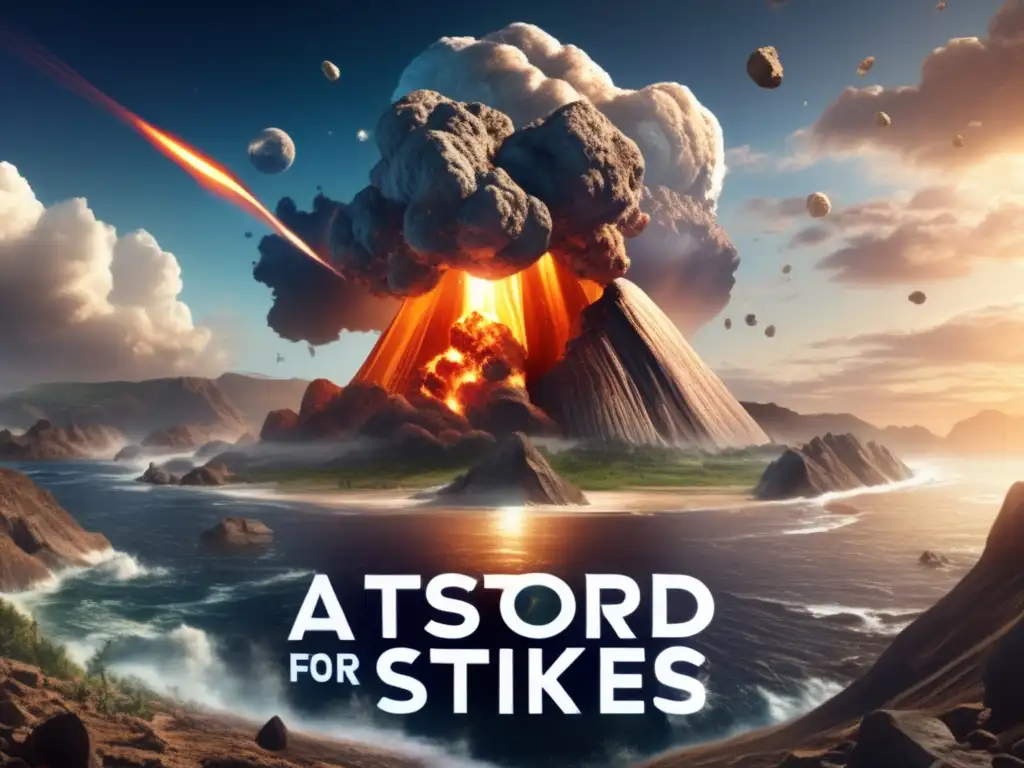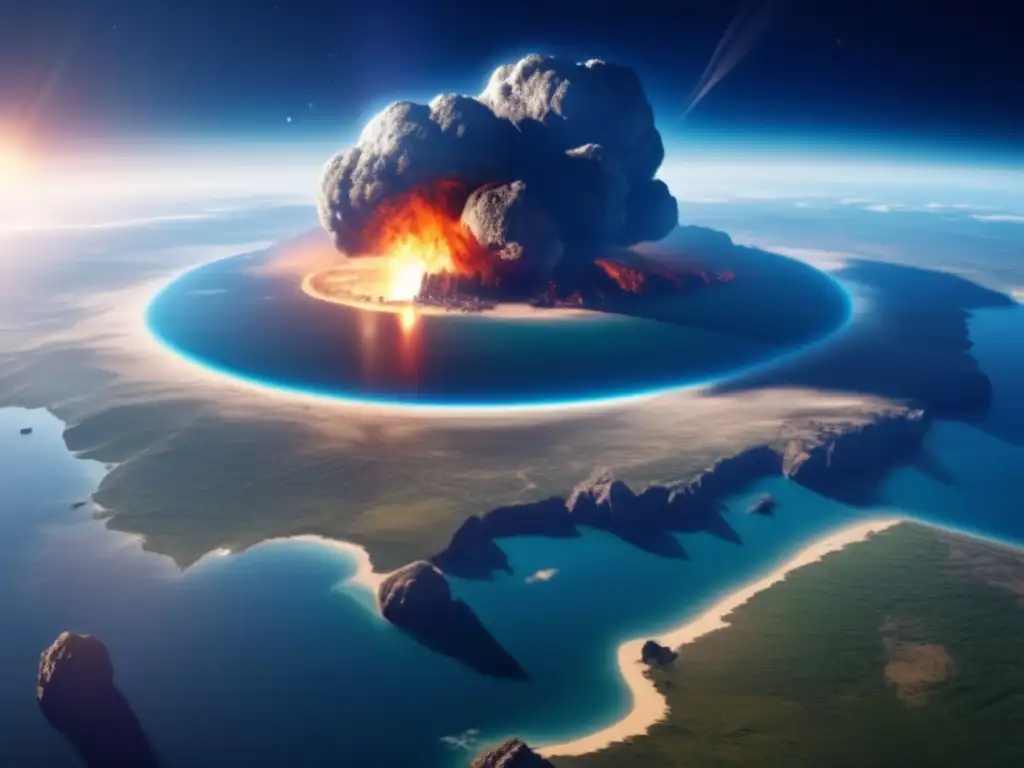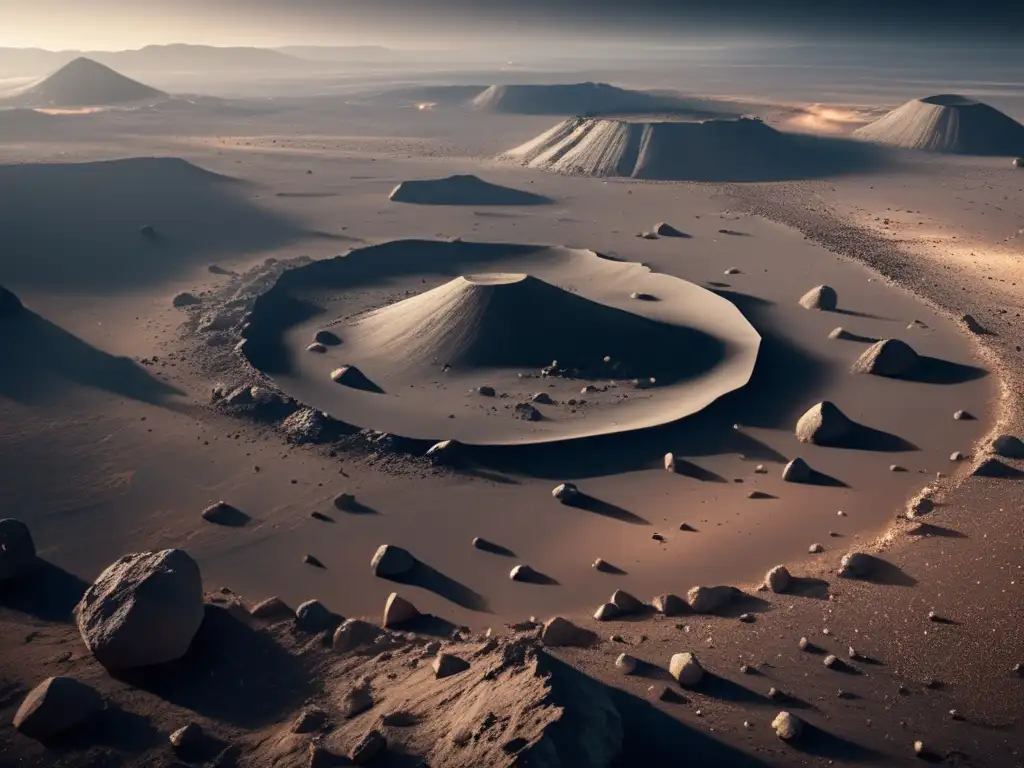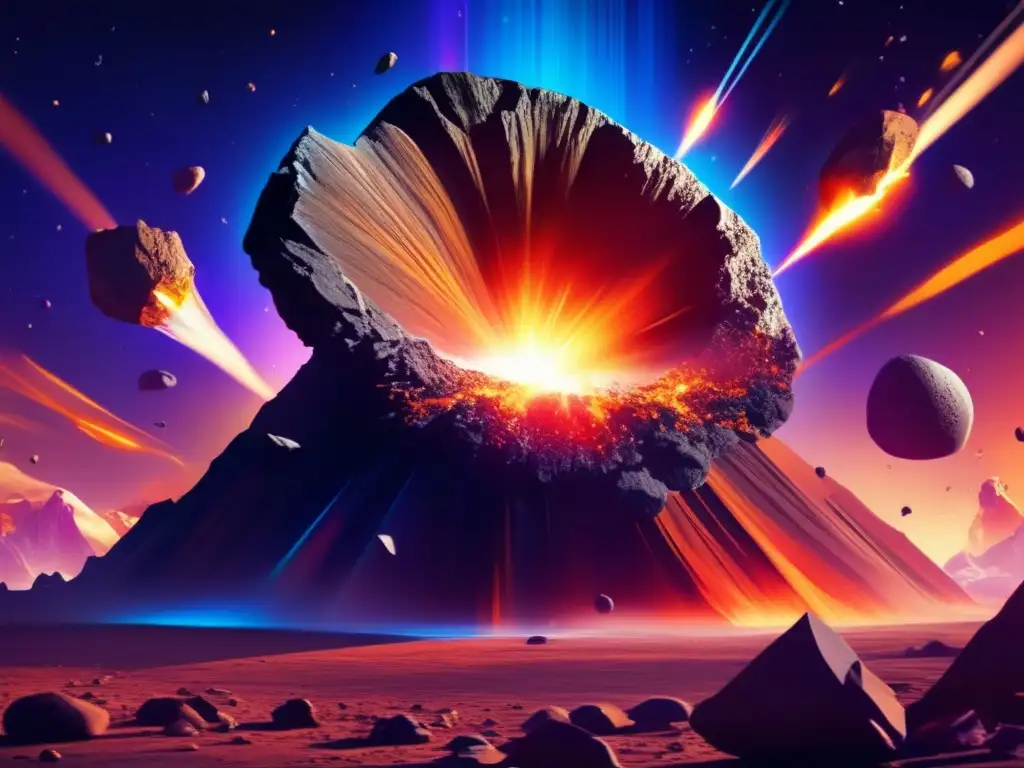Asteroid Strikes: Catalysts For Geological Change

Introduction
Asteroid strikes have long been a topic of fascination and concern. These celestial bodies can range in size from small pebbles to large mountains, and their impact on Earth can be catastrophic. While the chances of a large asteroid impacting Earth in any given year are low, the effects of such an event would be devastating. In this article, we will explore the ways in which asteroid strikes have acted as catalysts for geological change on Earth.
The Role of Asteroids in Planetary Evolution

Impact Crater Formation
One of the most obvious ways in which asteroids have caused geological change on Earth is through their impact craters. When an asteroid impacts Earth, it can create a circular depression in the ground - a crater. Depending on the size and speed of the asteroid, this crater can be anywhere from a few meters wide to hundreds of kilometers across.
Impact craters are some of the most visible evidence we have of past asteroid strikes, and they can provide valuable information about the conditions on Earth at the time of the impact. For example, the Chicxulub crater in Mexico, which was formed by an asteroid impact 66 million years ago, helped scientists piece together the timeline of events leading up to the extinction of the dinosaurs.
Volcanic Activity
Another way in which asteroids can cause geological change on Earth is through their effect on volcanic activity. When an asteroid impacts Earth, it can create shockwaves that travel through the planet's crust. These shockwaves can trigger volcanic eruptions by putting pressure on magma chambers or causing tectonic plates to shift.
There is evidence to suggest that asteroid impacts have played a role in the formation of some of Earth's largest volcanic provinces, including the Deccan Traps in India and the Siberian Traps in Russia. These events had a profound impact on the planet's climate and ecosystems, and may have contributed to several mass extinctions throughout Earth's history.
Oceanic Change
Finally, asteroids can cause geological change in the oceans as well as on land. When an asteroid impacts the ocean, it can create massive waves that travel across the water - tsunamis. These tsunamis can cause widespread devastation, both along the coast and further inland.
In addition to the direct damage caused by tsunamis, asteroid impacts can also have longer-term effects on the oceans. For example, an impact can release large amounts of carbon dioxide into the atmosphere, which can be absorbed by the oceans and lead to acidification. This process can have a major impact on marine ecosystems, potentially leading to the extinction of many species.
The Consequences of Large Asteroid Impacts

Climate Change
One of the most significant consequences of a large asteroid impact is the potential for climate change. When an asteroid hits Earth, it can release huge amounts of dust and other debris into the atmosphere. This debris can block out the sun, causing a temporary cooling effect on the planet.
This cooling effect can last for several years, and can have a devastating impact on global ecosystems. Plants may struggle to grow without enough sunlight, leading to food shortages and famine. Animals that rely on plants for food may also suffer as a result.
Mass Extinction
In some cases, large asteroid impacts can cause mass extinctions - the sudden and widespread loss of many species. The most famous example of this is the extinction of the dinosaurs, which is thought to have been caused by an asteroid impact 66 million years ago.
The effects of a mass extinction can be felt for millions of years. It can take ecosystems a long time to recover from such a catastrophic event, and the loss of biodiversity can have a significant impact on the planet's overall health. Some scientists believe that we are currently in the midst of the sixth mass extinction event in Earth's history, and that human activities are largely responsible.
Geological Change
In addition to the immediate effects of an asteroid impact, these events can also cause long-lasting geological change. For example, an impact can cause tectonic plates to shift, leading to the formation of new mountains or valleys. It can also create new mineral deposits, or cause existing ones to become exposed.
Over time, these changes can have a profound impact on the planet's geography and geology. They can also provide valuable information about the conditions on Earth at the time of the impact, helping scientists better understand the history of our planet.
Frequently Asked Questions

-
What is an impact crater?
An impact crater is a circular depression in the ground created by the impact of an asteroid or other celestial body.
-
What is a mass extinction?
A mass extinction is the sudden and widespread loss of many species. This can be caused by a variety of factors, including asteroid impacts, climate change, and human activity.
-
What is acidification?
Acidification is the process by which the pH of a body of water becomes more acidic, typically as a result of increased carbon dioxide in the atmosphere.
-
Can asteroid impacts cause tsunamis?
Yes, when an asteroid impacts the ocean it can create massive waves that travel across the water - tsunamis.
-
What is the Chicxulub crater?
The Chicxulub crater is a massive impact crater in Mexico that was formed by an asteroid strike 66 million years ago. It is widely believed to have contributed to the extinction of the dinosaurs.
Conclusion
Asteroid strikes have had a profound impact on the history of our planet. These events have caused geological change, climate change, and mass extinctions, and have played a major role in the evolution of life on Earth. While the chances of a large asteroid impacting Earth in any given year are low, it is important that we continue to study these events and their potential consequences. By better understanding the history of our planet, we can make informed decisions about its future.
Thank you for reading this article on asteroid strikes. We hope that it has been informative and engaging. Please feel free to share your thoughts in the comments section below, and to subscribe to www.asteroidrealm.com for more articles like this one.
Additional Resources

- NASA Planetary Defense Continues Progress on DART Mission to Protect Against Asteroids
- Impact Earth!
- How Did a Tiny Asteroid Cause Dinosaur Extinction?
 Asteroid Impacts: A Primer On Impact Cratering
Asteroid Impacts: A Primer On Impact Cratering Impact Echoes: Asteroid Strikes And Seismic Activity
Impact Echoes: Asteroid Strikes And Seismic Activity The Fallout Of Falling Stars: Exploring Asteroid Debris
The Fallout Of Falling Stars: Exploring Asteroid DebrisIf you want to discover more articles similar to Asteroid Strikes: Catalysts For Geological Change, you can visit the Asteroid Impacts category.
Leave a Reply

Articulos relacionados: